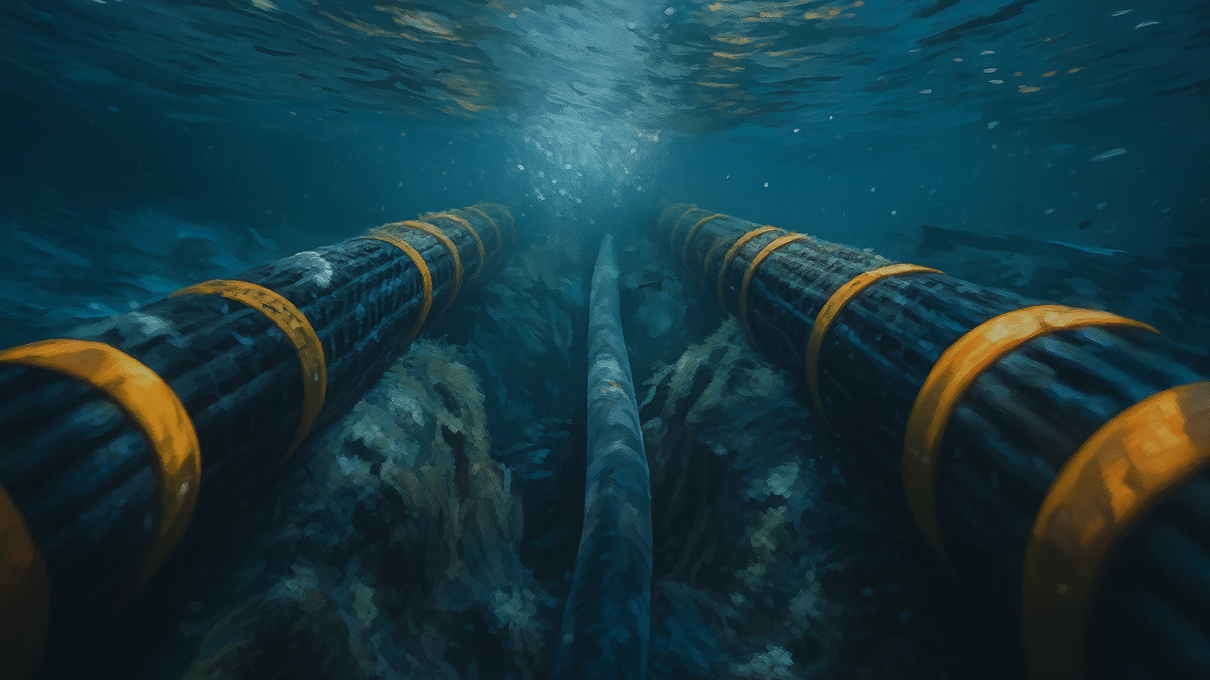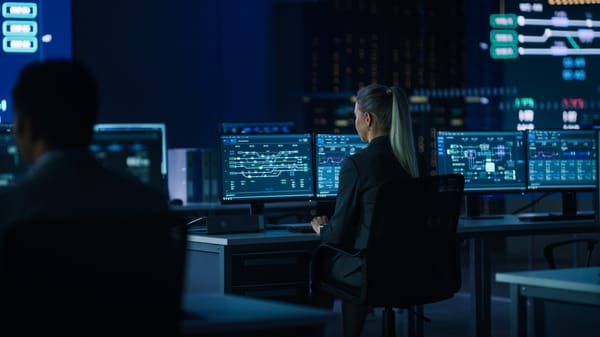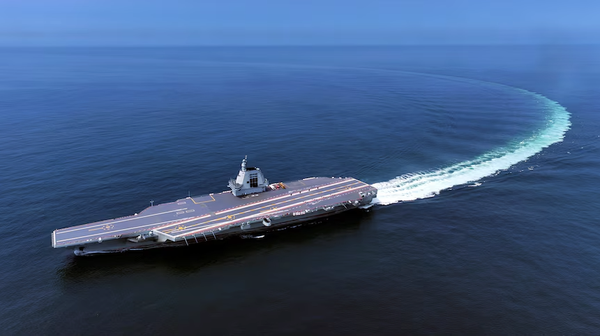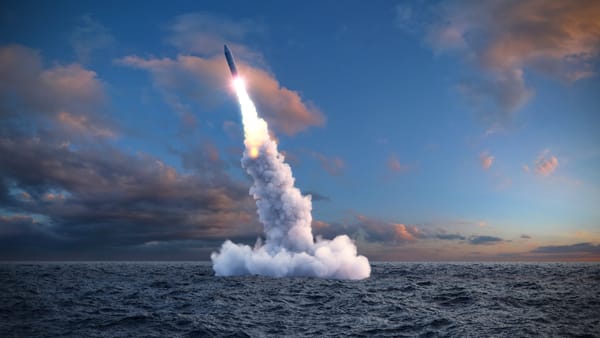Undersea Cable Vulnerabilities and National Security Risks
Undersea cables, carrying most of the world’s data, face shared security concerns as both China and the U.S. are scrutinized for roles in infrastructure access and alleged cable interception, highlighting the need for international cooperation and transparent protection measures.

Undersea cables carry the vast majority of global data, making them critical infrastructure but also a shared vulnerability for all nations.
Both China and the United States face scrutiny—China over repair and manufacturing roles, and the U.S. over alleged NSA and allied cable interception programs revealed in public disclosures.
Mutual security concerns highlight the need for international cooperation, transparent repair protocols, and joint monitoring frameworks to protect the global communications backbone.
Undersea cables form the invisible backbone of global communications, carrying the vast majority of the world’s data traffic—from encrypted government communications to financial transactions and everyday internet connectivity. Their strategic importance makes them a focus of national security planning for many nations. This research note examines vulnerabilities to these systems, including concerns raised in the United States about Chinese involvement, as well as historical allegations of American and allied interception activities, to provide a balanced perspective for both U.S. and Chinese readers.
The Critical Importance and Global Vulnerability of Undersea Cables
Undersea cables are recognised as part of critical infrastructure by the United States and many other countries. However, most cables are located outside national borders and connect multiple jurisdictions. This geographical dispersion increases vulnerability: a single cable may carry data between the United States and Singapore, Europe and Asia, or transit hubs in the Middle East. Such routes may also pass through or near Chinese or American territories, making them of interest to both powers. The combination of high data volume and sensitive content makes security a shared concern.
U.S. Congressional Concerns: Chinese Role in Cable Infrastructure
In early 2024, a U.S. Congressional committee requested information from major American technology companies about whether the undersea cables they use are manufactured, maintained, or repaired by firms with Chinese ownership or affiliation. This reflects U.S. worries over potential foreign access to infrastructure used to transmit sensitive data.
Determining the full extent of Chinese participation is complex. Global network routing is dynamic, with internet traffic following the most efficient path available, often across multiple jurisdictions. Even when infrastructure ownership is known, operational control over repairs and maintenance can be more opaque.
Identified Vulnerability Vectors
One area of concern is the presence of Chinese-manufactured components within cables linked to the U.S. or its allies. The Federal Communications Commission (FCC) has discussed potential restrictions on such equipment. Some fear that embedded devices could enable interception or service disruption. Similar debates have arisen over other infrastructure sectors, such as Huawei and ZTE telecommunications gear.
Another sensitive issue is the role of Chinese firms in undersea cable repair. Industry reports indicate that Chinese companies, including a Huawei Marine subsidiary, account for a significant share of global cable maintenance activity, historically repairing about a quarter of all global cable cuts. Under Chinese law, such companies could be required to cooperate with state directives, raising concerns in Washington and allied capitals about the possibility of covert interception during repairs.
Allegations of U.S. and Allied Interception Activities
Concerns over undersea cable security are not limited to Chinese involvement. Multiple media investigations, drawing on Edward Snowden’s leaked NSA documents, have alleged that the U.S. National Security Agency (NSA) and its allies in the “Five Eyes” intelligence partnership have tapped undersea cables for surveillance purposes. Projects such as Operation Tempora by the UK’s GCHQ reportedly involved direct access to high-capacity cables to monitor global data flows. The NSA’s FAIRVIEW program has also been linked to cable interception in cooperation with major telecommunications providers.
These disclosures indicate that cable interception has been part of U.S. and allied intelligence capabilities for decades, reinforcing the perception in Beijing and elsewhere that undersea cable security is a mutual concern, not a one-sided risk.
Industry and Government Responses
The U.S. has moved to reduce reliance on foreign repair capacity. American firm SubCom, owned by Cerberus Capital Management, manages all cables connecting directly to the U.S. and to U.S. military installations worldwide. Reports indicate SubCom is building its own fleet of cable repair ships to increase self-sufficiency. This mirrors efforts in other countries to develop domestic repair and maintenance capabilities.
Because most cables are owned and operated by private consortia, effective public-private cooperation is essential for security. However, the slow pace of developing independent capabilities has drawn criticism, especially given the heightened attention from congressional committees and intelligence agencies.
The Global Dimension of the Threat
Risks are not confined to U.S.-China interactions. Analysts have speculated about the potential for a coordinated campaign—by any state or non-state actor—to damage multiple cables globally. Such an event could cause significant economic and communications disruptions, particularly in regions with limited redundancy.
In 2023, NATO established a working group to coordinate undersea cable protection in the North Atlantic, employing AI and remote sensing to detect suspicious vessels. However, there is no equivalent multilateral body in the Indo-Pacific, despite the region’s dense and strategically important cable network.
Once a surveillance “tap” is installed on a fiber-optic cable, detection is extremely difficult. This makes preventive measures, such as rigorous control over repair activities and robust supply chain vetting, the most effective form of defence.

Outlook
Undersea cables will remain vital to global communications and economic activity. The same physical networks that enable seamless connectivity also create shared vulnerabilities. Both Chinese and American stakeholders have legitimate security concerns—whether about Chinese repair firms or alleged NSA/GCHQ monitoring.
In an era of heightened geopolitical competition, the challenge is to build international mechanisms that acknowledge these mutual concerns. Confidence-building measures, transparent repair protocols, and cooperative monitoring frameworks could help reduce the risk of misunderstanding and escalation. Given the cables’ global nature, solutions will need to be multinational, inclusive, and technologically robust to ensure that the arteries of the digital economy remain secure and resilient for all.




